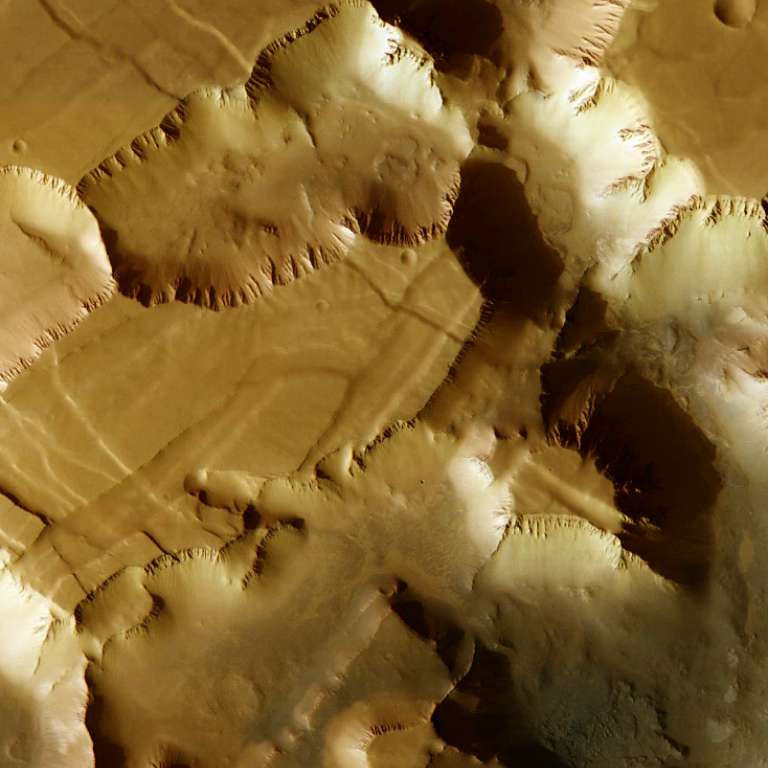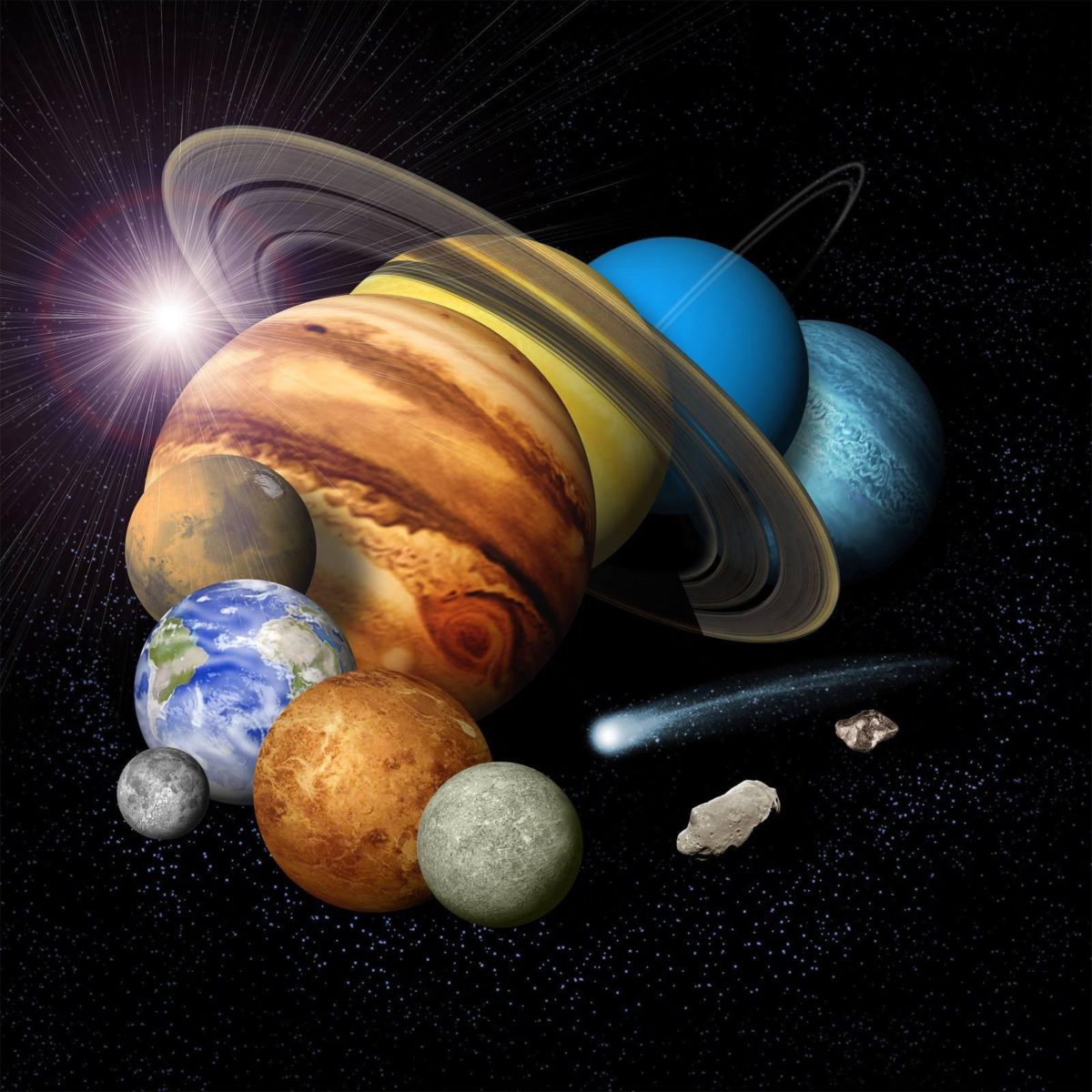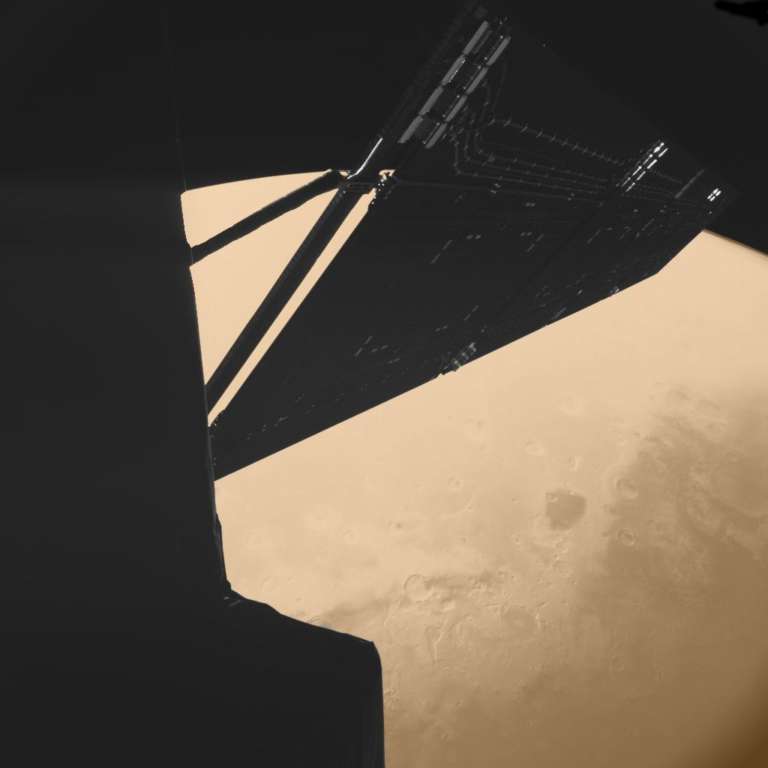All
All
Stories, updates, insights, and original analysis from The Planetary Society.
Day Hikes in the Labyrinth of Night
Noctis Labyrinthus on Mars is an amazing place for an imagined day hike, courtesy of images from Mars Express.
A new rover self-portrait and a new color image of Curiosity from orbit
Curiosity is inching her way through her first use of the drill on a Martian rock. She paused in the proceedings to capture a second Martian
Reflections on the 10th Anniversary of Columbia Disaster from a Science Investigator
David Warmflash, who organized a science (and peace) experiment with the Planetary Society for the ill fated STS-107 Columbia mission, reflects on that tragic day ten years ago.
Pretty picture: Neptune and Triton
On a lonely evening, what is one to do but to dip into archival space image data and surface with a gorgeous photo of a crescent Neptune and Triton?
Columbia, ten years on
Remembering Rick Husband, William McCool, Michael Anderson, Kalpana Chawla, David Brown, Laurel Clark, and Ilan Ramon on the tenth anniversary of the loss of the space shuttle Columbia.
Saturn's Hexagon Viewed from the Ground
For the first time, amateur astronomers are capturing spectacular images of Saturn's bizarre north polar hexagon.
Planetary Society Weekly Hangout, Thu Jan 31 1200PT/2000UT: Sarah Noble on lunar science and working for NASA HQ
We welcomed Sarah Noble to our weekly Google+ Hangout. Sarah is a lunar geologist and a civil servant working in the Research & Analysis program at NASA Headquarters, and has recently been named Program Scientist for the LADEE lunar mission.
One of my favorite space images of all time: Rosetta was here
A conversation on Twitter today reminded me of this photo, which is one of my all-time favorite space images: the view from Rosetta during its Mars flyby.
Dawn Journal: Vesta's Mountains, Gorges and Craters
As Dawn continues thrusting toward Ceres, Marc takes a look back at the intrepid spacecraft's discoveries.
Scientists: Register to be a Lunar and Planetary Science Conference Microblogger!
Hey planetary scientists! Many of you know that the Lunar and Planetary Science Conference (LPSC) is a great meeting in a venue that is perfect except for one thing: Internet access is positively lousy. So I'm really excited that a solution that I advocated to conference organizers is being adopted.
Enceladus: A problem of contrast
Time for my quarterly foray into the Cassini archival science data! The very first image I downloaded from the January 1, 2013 data release presented an interesting challenge to my image processing skill. I'll show you the pretty picture of Enceladus and then explain how I processed it.
A New Statement on NASA's 2020 Rover Mission
The Planetary Society remains committed to a balanced program of solar system exploration, with Mars, outer planets, and small missions all playing an important part.
Curiosity update, sol 171: Placing the drill
They're getting closer and closer to drilling. Curiosity now seems to be positioned in the spot where they plan to be when they execute that long-awaited first drill.
Up Is the New Up
The European Space Agency will enjoy a 6.5% increase in funding this year, reports SpaceNews.
Weather Report: Mars
Just like on Earth, clouds and storms often ripple through the Martian atmosphere. You can even check the daily weather report.
Advocacy Update: The Society Traveled to Washington
The Planetary Society makes another visit to Capitol Hill to advocate for Planetary Science funding at NASA.
Kuiper Belt Objects Submitted to Minor Planet Center
Recently, several of the Kuiper Belt Objects our team has discovered while searching for New Horizons post-Pluto flyby candidates have been submitted to the Minor Planet Center and their orbital information is now in the public domain.
"Sand" means something different to me than it does to you, probably
I had one of those
Hey look, I'm a cartoon!
Zach Weiner's new collection of geekily awkwardly smart web comics will include a story I contributed!
Introducing PlanetFour
The Mars I study is really active; the surface constantly changes. We have collected a lot of image data about changing seasonal features near the south pole. There is so much that we can't analyze all of it on our own. We need your help, through a new Zooniverse project named PlanetFour.


 Explore Worlds
Explore Worlds Find Life
Find Life Defend Earth
Defend Earth


 Sun
Sun Mercury
Mercury Venus
Venus Earth
Earth Mars
Mars Jupiter
Jupiter Saturn
Saturn Uranus
Uranus Neptune
Neptune Small Bodies
Small Bodies

















